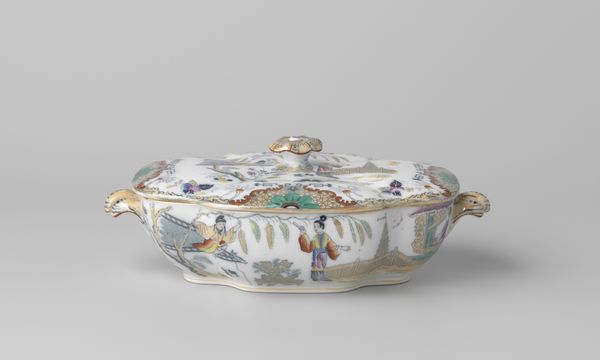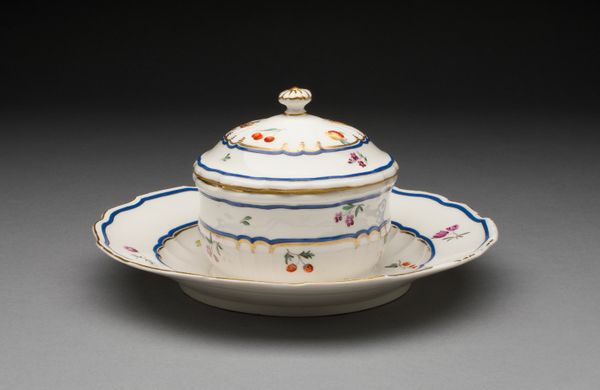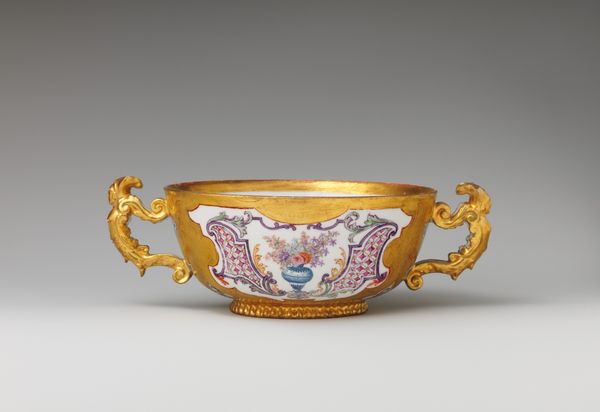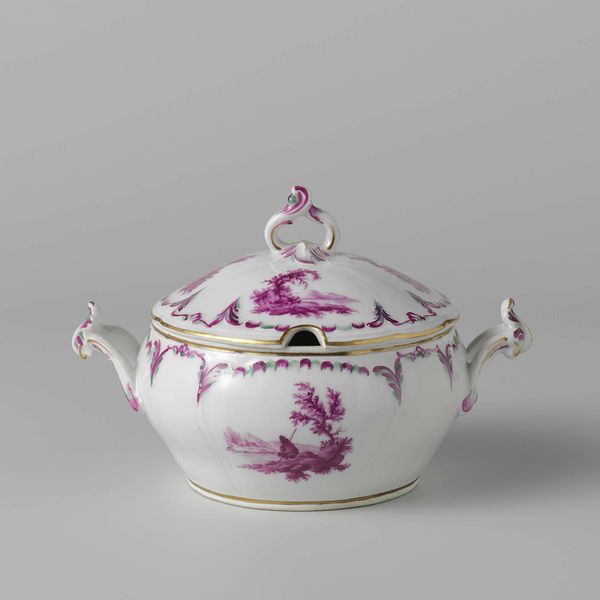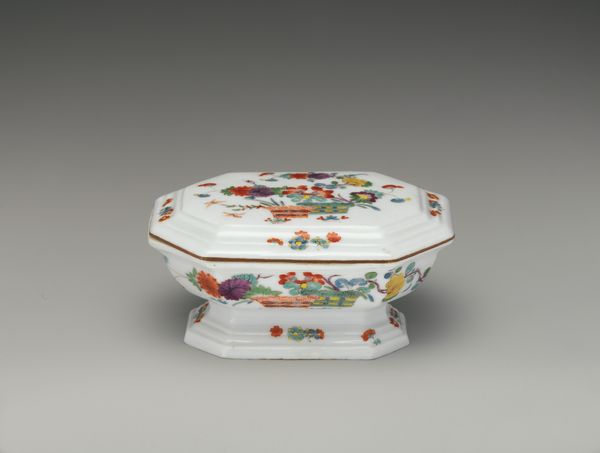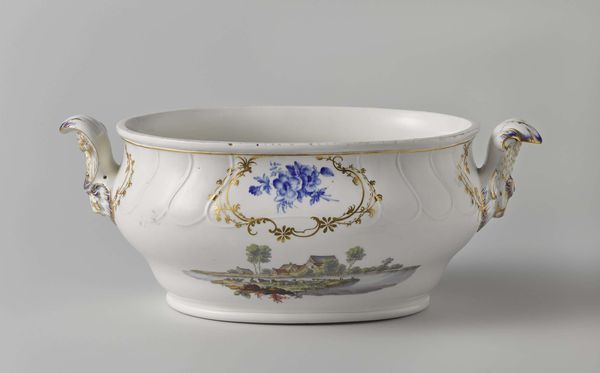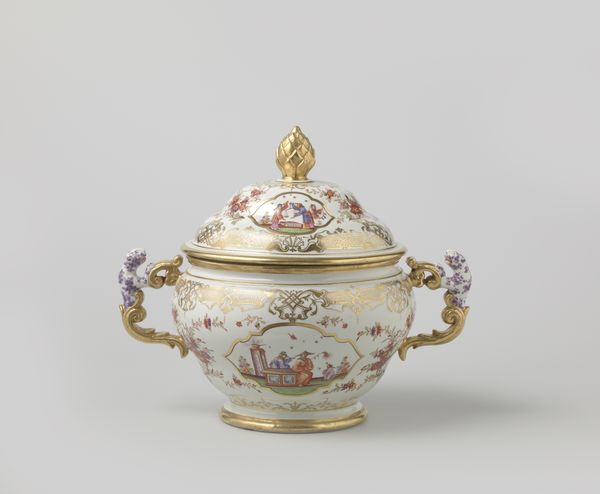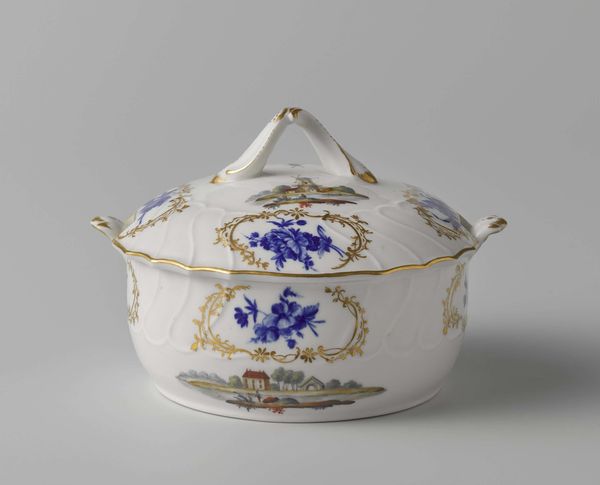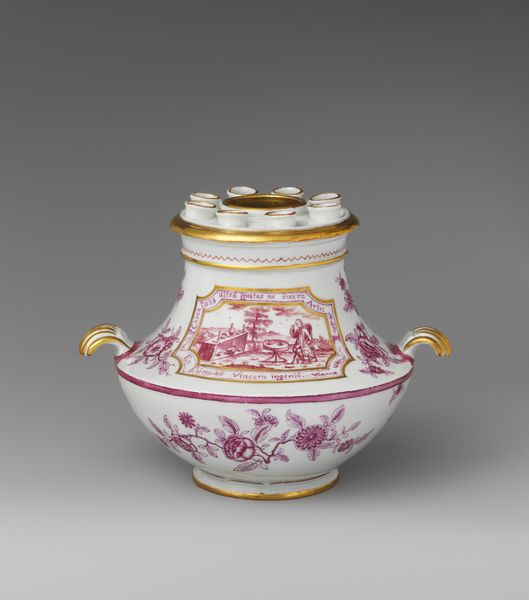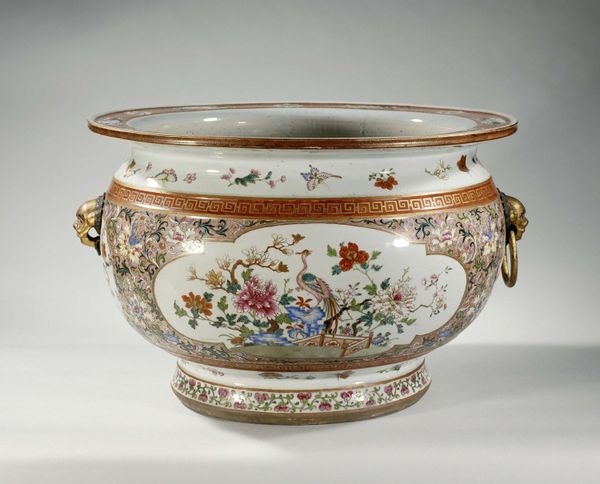
ceramic, porcelain, sculpture
#
animal
#
landscape
#
ceramic
#
flower
#
porcelain
#
sculpture
#
decorative-art
#
rococo
Dimensions: 3 5/16 × 7 3/4 in. (8.4 × 19.7 cm)
Copyright: Public Domain
Curator: Look at this elegant object; it's a covered dish, crafted around 1734 in Vienna, now residing here at the Metropolitan Museum of Art. Editor: It strikes me as delightfully frivolous. The ornamentation is profuse, verging on excessive, yet somehow it achieves a perfect Rococo harmony. Curator: Absolutely. Let's delve into the materials; we're looking at hard-paste porcelain, which was still relatively new and highly prized at the time. Its production demanded precise technical skills and specific materials, connecting the dish to wider trade networks and the economics of luxury. The floral motifs were likely produced by teams specializing in such depictions. Editor: And those floral motifs! Clusters of brightly coloured flowers intermingle with delicate scenes, evoking images of Arcadia and idealized pastoral life, recurring to a pre-industrial state and rural symbolism. It also presents animals in pastoral imagery on its base. I see echoes of classical idylls, loaded with connotations of leisure and plenty. Curator: I agree. The decoration is key. Those miniature landscapes are painted en grisaille – that monochrome violet-gray – which was incredibly fashionable. The artist would have needed considerable skill. Look also at the gold detailing; it elevates the object, emphasizing its value and appealing to wealthy patrons who had the leisure time to own, commission, and even eat with it. Editor: Indeed. The porcelain, the meticulous painting, and the gold trim—it's a symphony of symbols indicating refinement. It encapsulates the spirit of its era. What narratives or social rituals might it once have accommodated, I wonder? It is like peeking into the mind of 18th century tastes. Curator: Well said. When we consider what it meant to own and use this piece – a show of wealth and social grace and material engagement, an object for its moment, this piece speaks to the enduring appeal of artistry. Editor: A beautifully ornate time capsule reflecting elite taste, its decorative imagery has managed to carry its symbolism to our present day, prompting a reflection on human expression through our historical looking glass.
Comments
No comments
Be the first to comment and join the conversation on the ultimate creative platform.
